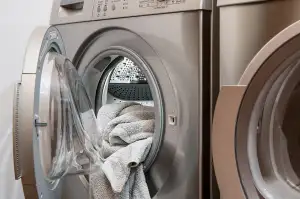DIY Fruit Fly Trap: A Simple and Effective Solution for a Fly-Free Home

Fruit flies are a common nuisance in many homes, especially during the warmer months. These tiny insects are attracted to ripe and decaying fruits, vegetables, and other organic matter. They can quickly multiply and infest your kitchen, making it difficult to enjoy a fly-free environment. Fruit flies are not only annoying but can also contaminate your food with bacteria and other pathogens. If you're tired of swatting at these pesky creatures or finding them hovering around your fruit bowl, it's time to take action. In this article, we will introduce you to a simple yet effective solution: the DIY fruit fly trap. With just a few materials and some easy steps, you can say goodbye to fruit flies and reclaim your home.
Importance of using a fruit fly trap
The importance of using a fruit fly trap cannot be overstated. Fruit flies are not only annoying pests, but they can also contaminate our food and spread bacteria. By using a fruit fly trap, we can effectively control their population and prevent them from infesting our homes. These traps are specifically designed to attract and capture fruit flies, providing us with a simple and effective solution for a fly-free home. Don't let these tiny insects ruin your enjoyment of food – take action and set up a fruit fly trap today!
Materials needed for a DIY fruit fly trap
To make your own DIY fruit fly trap, you will need a few simple materials that are readily available. Here is a list of what you'll need:
1. A small glass or plastic container with a lid: This will serve as the main body of the trap and should be able to hold liquid.
2. Apple cider vinegar: Fruit flies are attracted to the sweet smell of apple cider vinegar, making it an effective bait for the trap.
3. Dish soap: Adding a few drops of dish soap to the vinegar will help break the surface tension and prevent flies from escaping once they enter the trap.
4. Plastic wrap or a rubber band: You'll need something to cover the top of the container and create a small opening for flies to enter.
5. Toothpick or fork: This will be used to poke holes in the plastic wrap, allowing flies to access the trap while preventing them from easily escaping.
With these materials on hand, you'll be ready to create your very own fruit fly trap in no time!
Step-by-step instructions for making a fruit fly trap
Step 4: Step-by-step instructions for making a fruit fly trap
Making your own fruit fly trap is simple and requires just a few materials. Follow these easy steps to create an effective trap:
1. Gather the materials: You will need a small glass or jar, apple cider vinegar, dish soap, plastic wrap, and a rubber band.
2. Pour the apple cider vinegar: Fill the glass or jar with apple cider vinegar until it is about one-third full. The strong smell of the vinegar will attract the fruit flies.
3. Add dish soap: Add a few drops of dish soap to the vinegar. The soap will break the surface tension of the liquid, causing the flies to sink and drown when they come into contact with it.
4. Cover with plastic wrap: Stretch a piece of plastic wrap tightly over the top of the glass or jar. Secure it in place with a rubber band, ensuring there are no gaps for flies to escape.
5. Poke holes in the plastic wrap: Use a toothpick or small sharp object to poke several small holes in the plastic wrap. These holes will allow the flies to enter but make it difficult for them to escape.
6. Place the trap strategically: Position your homemade fruit fly trap near areas where you often see fruit flies, such as kitchen counters or near ripe fruits and vegetables.
7. Monitor and empty regularly: Check your trap daily and empty any captured fruit flies into soapy water to ensure they cannot escape.
By following these simple steps, you can easily create an effective fruit fly trap using common household items.
Tips for effective placement of the trap
When it comes to effectively placing your DIY fruit fly trap, there are a few key tips to keep in mind. Firstly, it's important to locate the trap near the source of the fruit flies. This could be a fruit bowl, compost bin, or even a garbage can. By placing the trap close to their breeding ground, you increase the chances of catching them.
Secondly, make sure that the trap is placed in an area where it won't be disturbed or knocked over easily. Fruit flies are attracted to the scent of rotting fruits and vegetables, so keeping the trap stable and undisturbed will ensure that they are lured in.
Additionally, consider placing multiple traps throughout your home if you have a widespread fruit fly problem. This will increase your chances of capturing more flies and preventing them from spreading further.
Lastly, remember to avoid placing the trap near areas where you prepare food or eat. While the trap is effective at attracting and trapping fruit flies, you don't want it to interfere with your own dining experience.
By following these tips for effective placement, you can maximize the efficiency of your DIY fruit fly trap and enjoy a fly-free home.
Natural remedies to prevent fruit fly infestation
Natural remedies can be a great way to prevent fruit fly infestations in your home. One effective method is to keep your kitchen clean and free of any ripe or rotting fruits and vegetables. Fruit flies are attracted to the sweet smell of these foods, so by removing them from your kitchen, you can significantly reduce the chances of an infestation.
Another natural remedy is to use vinegar traps. Fruit flies are attracted to the scent of vinegar, so placing a small dish filled with apple cider vinegar and a few drops of dish soap near areas where fruit flies gather can help trap them. The dish soap breaks the surface tension of the vinegar, causing the flies to sink and drown.
You can also try using essential oils as a deterrent. Flies dislike certain scents such as lemon, eucalyptus, and peppermint. Mixing a few drops of these essential oils with water in a spray bottle and spritzing it around your kitchen can help repel fruit flies.
Lastly, keeping your trash cans tightly sealed and emptying them regularly will prevent fruit flies from being attracted to any decaying organic matter inside.
By incorporating these natural remedies into your routine, you can effectively prevent fruit fly infestations in your home and enjoy a fly-free environment.
Maintenance and disposal of the fruit fly trap
Maintenance and disposal of the fruit fly trap is essential to ensure its effectiveness. Regularly check the trap for captured fruit flies and empty it as needed. To dispose of the trapped flies, fill a container with soapy water and pour the contents of the trap into it. The soap will break down the surface tension of the water, causing the flies to drown. Clean the trap thoroughly with warm soapy water before reusing it to prevent any lingering odors or attractants. Remember to replace the bait every few days to keep it fresh and appealing to fruit flies. By maintaining and properly disposing of your DIY fruit fly trap, you can enjoy a fly-free home all year round.
In conclusion, DIY fruit fly traps are a simple and effective solution for keeping your home fly-free. By using common household materials and following the step-by-step instructions provided, you can easily create a trap that will attract and capture fruit flies.
The importance of using a fruit fly trap cannot be overstated. Fruit flies not only pose a nuisance in our homes but can also contaminate our food and spread bacteria. By trapping them, we can prevent their population from growing and maintain a clean and healthy living environment.
Remember to place the trap in areas where fruit flies are most likely to gather, such as near ripe fruits, garbage bins, or compost piles. Additionally, consider implementing natural remedies like keeping your kitchen clean, storing fruits properly, and regularly disposing of overripe produce.
Maintenance of the fruit fly trap is crucial for its effectiveness. Empty the trap regularly to prevent it from becoming too full or attracting other pests. Dispose of the captured fruit flies by sealing them in a plastic bag before throwing them away.
In conclusion, DIY fruit fly traps offer an affordable and eco-friendly solution to combatting these pesky insects. With just a few materials and some simple steps, you can enjoy a fly-free home while ensuring the safety of your food and maintaining good hygiene practices. So go ahead and give it a try – say goodbye to fruit flies once and for all!
Published: 20. 12. 2023
Category: Home



